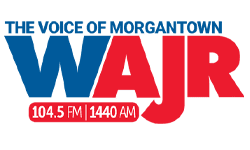MORGANTOWN, W.Va. – The recently established the WVU Rapid Development Laboratory (WVURDL)at the WVU Health Sciences Center has streamlined testing and completely changed the procedure for the return to campus for WVU students on the Morgantown campus.
About five months into the pandemic, Governor Justice allocated about $3 million in CARES Act funding to build the automated robotic system that can process hundreds of PCR samples at a time. According to experts, PCR tests are much more reliable than the antigen method, but do take longer to process.
Before the WVURDL was in operation tests took up to five days to process. When large volumes of tests were required independent testing options had to be used to timely process results, according to Vice President of Strategic Initiatives Rob Alsop.
“Our turnaround times for a lot of people weren’t just within 24-hours,” Alsop said,” We actually had people that tested in the morning and we had results by the evening and for a PCR test that’s unheard of.”
Because it is a new concept the system was evaluated, monitored and checked to make sure the results of samples were reached properly. According to Alsop the lab is 99-percent accurate.
“The RDL lab went through some testing to prove that it was a very accurate PCR test,” Alsop said,” So, we think it is as accurate as anything out there from an industry standard perspective.”
According to the WVU COVID Dashboard, more than 16,000 students and faculty were tested six day period in preparation for the spring semester. The rapid testing technology also allowed officials to offer a “self swab” test for students who would take advantage of that option.
“We were a little worried that people wouldn’t be comfortable doing a “self swab,” in fact it’s been very popular and students didn’t mind it at all,” Alsop said,” One of the things it’s allowed us to do is staff things a little bit differently that will save from a cost perspective.”
The new technology has streamlined the pre-class testing process and has actually increased confidence and safety on campus.
“Having the ability to get results in one or two days at a max, as opposed to three-to-five days,” Alsop said,” It eases minds, and the quicker someone tests positive and you can get them into isolation and away from people the more we can prevent spread.”
When not in use for pre-class testing the lab is used to handle overflow from others areas of the state. Additionally, the RDL concept is becoming a model for other areas in the country.
“There are a lot of people looking at the governor’s decision to not do the federal national contracts, but to do something designed with the state that is a model and our Health Sciences Center should be proud of,” Alsop said,” There are a lot of people taking notice.”


